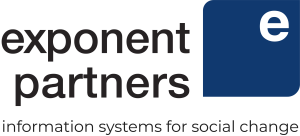Case Study: California Human Development
Highlights
- Reporting: Reduced prep time from 2 weeks to 1 day
- Quality Assurance: Monitoring program delivery remotely and automatically saves time and ensures better product
- Data: Enhanced visibility into data used to secure a $5 million grant
"ECM helps us capture, analyze, and act on empirical data. The data informs the way that we provide excellent services and helps to secure resources to further our mission." – Anita Maldonado PhD, Chief Executive Officer, CHD
California Human Development is a non-profit organization waging the War on Poverty for 50 years. Inspired in service to our state’s farm workers, today CHD serves people of low income from many walks of life—giving 25,000 people a year in 31 northern California counties a hand up to the American Dream.
Challenges
Inefficient processes
With a combination of paper case files and spreadsheets sprinkled throughout the organization’s three offices, CHD couldn’t easily aggregate data and create reports at any given time. “Reporting around specific date ranges, such as a calendar year or fiscal year, was extremely difficult,” explained Kai Harris, Director of Programs at CHD. “We spent a lot of time compiling information and manually counting paper files to get the data we needed. The process for creating even simple reports was a real challenge.”
Narrow view of client base
“We didn’t have any way to monitor client needs as they changed over time or to identify trends without first doing a significant amount of work,” said Kai. “Just trying to answer basic questions often required several phone calls and meetings, that were followed by delays as we waited for someone to dig through paper files or create a report.”
Lack of visibility into performance
CHD couldn’t easily or fully understand its performance or identify trends over time. According to Kai, “It was difficult to answer programmatic questions about what was working or wasn’t working, beyond anecdotal stories shared by case managers.”
Data silos across multiple locations
CHD’s Day Laborers program is based out of two locations, and its Immigration program provides services out of three locations. The referral of a client from one office to another was done over the phone, without the data being formally captured and shared. These ‘warm’ hand-offs meant that CHD didn’t have a sense of how many clients in one program were being referred internally and provided additional wrap-around services. For the organization’s Immigration program, CHD had to rely on staff in remote offices to do their own counting and reporting, before sending data to head office, where it was then manually aggregated.
Solution
CHD implemented ECM for its Day Laborers and Immigration programs, with a longer-term vision of expanding the solution to its other programs and integrating it with other funding-mandated tracking systems. “Salesforce is a system that easily connects to and talks to a lot of other systems, giving us a lot of opportunity to grow in diverse areas.”
Results
Streamlined processes—from intake to reporting
For intake, timeliness has increased significantly. “The time from a client coming in and doing an intake to when CHD knows they are a client has been reduced to basically zero,” remarked Kai. “Improvements to our processes have led to enhanced transparency and allow us to course-correct faster.” Dramatic improvements have also been made on the reporting front. “Before, it would take a significant amount of time to put together programmatic reports. Using ECM, we can now generate pre-built reports in a single click. It is a real game-changer.” For example, a report that used to take two days to build can now be done in seconds. “Thanks to ECM, now the data is just there and accessible from any of our offices. We can monitor progress at the client, staff, and organization levels at whatever intervals we determine without taking additional staff time to pull those reports.” ECM’s dashboards give CHD the ability to track progress across multiple programs in real-time and to pull data directly when reporting to a funding source. An annual report for one of the organization’s main funding sources used to take two weeks to prepare; the same report can now be created in a day.
Noticeable shift towards a more client-centric strategy
Now, with a 360-degree view of the client, staff can ensure smooth client hand-offs between programs. “Clients are less likely to fall through the cracks because we have a record of referrals being made on both sides,” explained Kai. “That referral can be followed up on in a systematic way, rather than relying on memory or post-it notes.” ECM also enables staff to spend more time focusing on clients, since less time is required to complete certain tasks or prepare reports. The automation of specific tasks has given CHD’s Immigration program staff the ability to communicate proactively with DACA clients who need reminders of their anniversary to renew. No longer required to assemble reports or travel as frequently between offices to share information, staff can concentrate on delivering direct services, meeting more clients, doing more outreach, and increasing the number of cases they handle. ECM also reinforces this client-centric strategy through the organization’s fire relief program, as staff can quickly and easily check potential immigration remedies while providing fire relief-related support, and make direct referrals as needed.
Better visibility into performance
In CHD’s Immigration program, where contract deliverables are monitored in multiple locations, management can now see the program’s pipeline of clients across different categories. The data is being used to determine if the organization is on-track to meet its goals, or if it needs to shift strategies, allocate more resources to certain areas, or develop other strategies. Faster and better visibility into the program’s fee-for-service revenue has also been beneficial as head office can now monitor demand at remote offices. “ECM enables us to easily see cases as they come in, project the related fee-for-service revenue, while also ensuring that we meet our targeted contractual obligations for free-to-client services. This valuable data helps direct where we want to go programmatically.”
Improved data accuracy, fidelity, and depth
The ability to set required fields, do validation, and add in-line documentation in ECM ensures that CHD is capturing more and better data, especially related to demographics. “With ECM, we have significantly faster feedback loops, and can immediately dig into the root cause when we see an issue,” stated Kai. “For example, I can easily run a quality assurance report that shows gaps in intake data. Based on that report, I can quickly follow-up with staff, identify training deficiencies, or see what is happening programmatically where this information isn’t being collected, and then take action in a timely manner.”
Leveraged ECM’s extensibility to respond to unexpected events
Within several weeks of the Northern California fires in 2017, Kai used ECM to launch CHD’s “One Stop Wildfire Relief and Resources” program with minimal support from Exponent Partners. “Having been involved in the implementation of ECM, and by using the success documentation provided by Exponent Partners, I was able to quickly clone one of our existing programs in ECM and change the settings to match our needs for the fire relief program.”
Secured additional funding by leveraging data from ECM
Data around needs assessments, volume of clients, and projected needs over time related to assisting immigrants affected by the fires enabled CHD to secure a $5 million grant from the state. “ECM enabled us to start tracking our clients, build our numbers, and tell our story in a way that resulted in significant funding that has allowed the program to grow to what it is now,” explained Kai.




